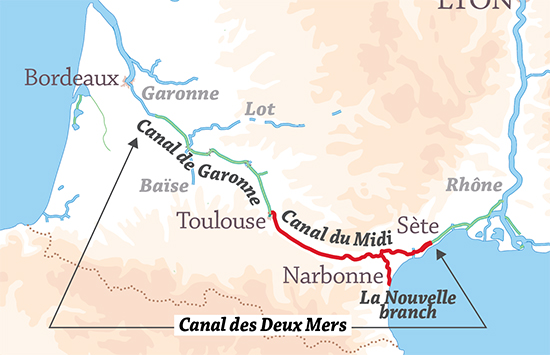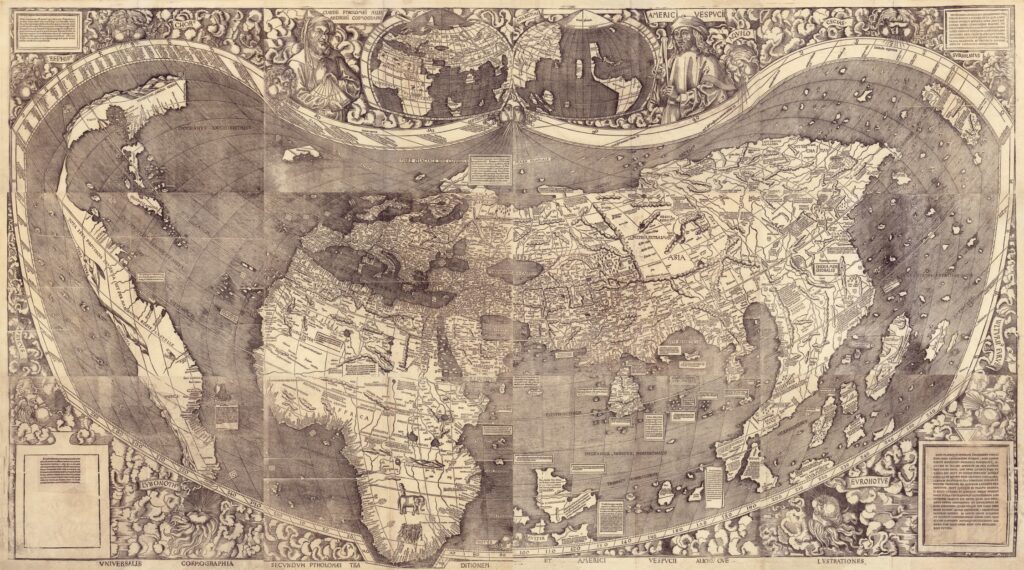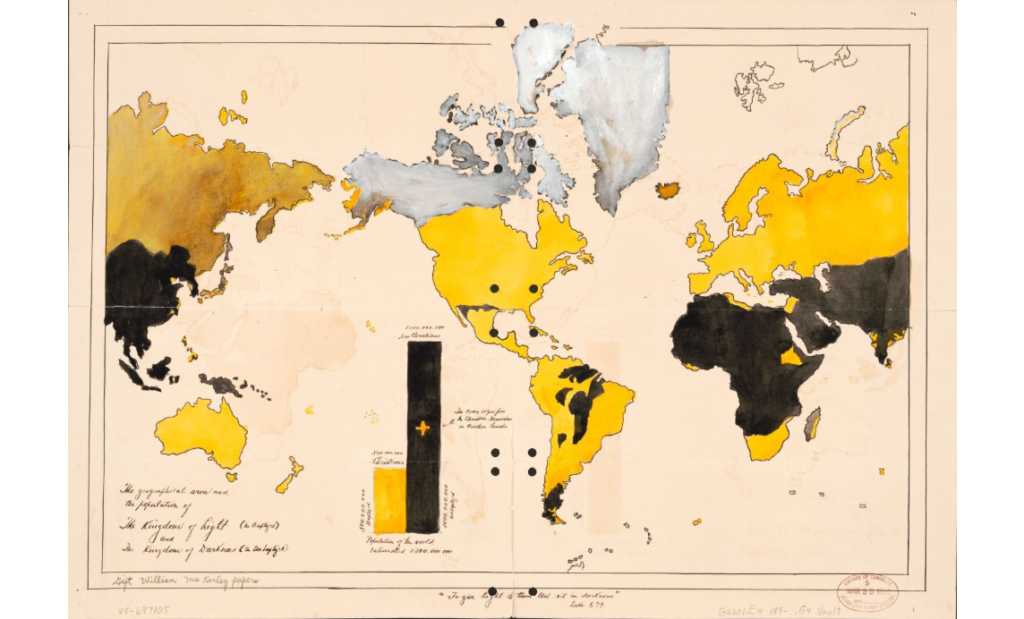A brief review of the book; Impossible Engineering: Technology and Territoriality on the Canal du Midi. By Chandra Mukerji (2009).

Imaginative understanding. Conventionally architectural history is taught in chronological sequence or via individual technological or artistic achievements. The historian E.H. Carr mentions, “The historian is necessarily selective. The belief in a hard core of historical facts existing objectively and independently of the historian is a preposterous fallacy, but one which it is very hard to eradicate” (Carr, 1961). Carr emphasizes that a historian needs an “imaginative understanding” of the mindset and era of people being studied. Historiography should be a working model to understand conditions rather than finding an official culprit of past events. Imaginative understanding might be evident in the discipline of the history of science, where research includes technological systems and infrastructural objects produced by various entities (humans and non-human) that span years in their production and operability.
In her book concerning the construction history of the Canal du Midi[1] (1667-1694) in Southern France, Chandra Mukerji exemplifies an essential fundamental shift, a cognitive drive, and prioritization of the “imperative problem.” A task(s) needing resolution to move forward a series of protocols that would prove to be the impetus for future technological paradigms. The building of Canal du Midi did not have explicit technical references, a renaissance figure, or a specific group that analyzed and proposed a scheme. Like the construction of the Duomo in Florence (1436 AD), where the only construction knowledge was guaranteed by Filippo Brunelleschi’s temperament and his careful study of the Pantheon in Rome (125 AD). A problem left to a sole “genius” with the knowledge to uncover all the technical and aesthetic solutions to the given challenge of the time. On the contrary, the construction of the Canal du Midi was a work of collective knowledge by an assemblage of actors with vernacular skills and identities.
Work on the Canal du Midi was initiated during the rule of Louis XIV, yet it relied on a sacred mandate rather than on a political official one. According to the belief system of the time, shaping the earth and managing its natural (resources) was a human right given by God, not the king. Faith in the authority over nature handed down by God made it clear that the means would be found in an unforced and collaborative method. Therefore, the initiative to build a canal 240 kilometers towards the Mediterranean was a vernacular and sacred rite rather than a rational and scientific endeavor. Many of the technologies required to build the canal came from various regions and existed in diverse forms, including knowledge from military or mining brigades, masons, local farmers, and other trades; however, it was still vernacular knowledge.

Community Assemblages. Pierre-Paul Riquet (1609-1680) was a tax collector, fluent in engineering and infrastructure construction. Riquet had a vision for the canal in Languedoc and its potential long-term and economic benefits for the region and the country. His occupation facilitated communication with local knowledge and vernacular expertise. Once he gathered the native know-how, the canal became a “product of collective intelligence” of people with different backgrounds who shared their knowledge to undertake such a massive task. Riquet’s leadership and trust in local knowledge allowed the emergence of a bottom-up process assembling itself as skills were required. In his definition of assemblage theory, Manuel DeLanda states, “Assemblages have a fully contingent historical identity, and each of them is, therefore, an individual entity” (DeLanda, 2016). An assemblage forms when a community comes together; however, it leaves personal identities intact. DeLanda continues, “To properly apply the concept of assemblage to real cases we need to include, in addition to persons, the material and symbolic artifacts that compose communities and organizations: the architecture of the buildings that house them; the myriad different tools and machines used in offices, factories, and kitchens; the various sources of food, water, and electricity; the many symbols and icons with which they express their identity” (DeLanda, 2016) Riquet was able to employ community assemblages consisting of unique human and non-human entities for his grand project.

As DeLanda argues, community assemblage must also consider artifacts (non-human entities) as part of the expertise brought by a community. Machines, tools, and other technical objects are part of the expertise that Riquet found across the region. The canal was a social engineering experiment that brought together community desires, knowledge, and identities to produce a shared vision. The collaboration in Languedoc included groups who spoke a different language, were of different gender, education, and social status. common link between the different groups was a desire to embrace their classical roman history, a symbolic attitude studied and traditionally handed down through generations. This classical past was already part of the region’s social life and community activities (farming, herding, running mills, irrigation, agriculture). “It was this kind of knowledge: the intelligence of bandits, fishermen, washerwomen, masons, charcoal makers, and women indigenous engineers – that made it possible to build a canal in Languedoc” (Mukerji, 2009).
“In this empire, the art of cartography was taken to such a peak of perfection that the map of a single province took up an entire city and the map of the empire, an entire province.” Jorge Luis Borges in A Universal History of Infamy, 1946
World-building. Cartographies possess power. For centuries maps have represented colonial power, illustrated economic trade routes, land acquisition, and the places of future struggles. Maps are a proxy of the real, yet they also suggest new relationships, possible outcomes, and even new possible worlds. Before and during the construction of the Canal du Midi, cartographers documented chart locations, building techniques, topographical modifications, and other manipulations of groundworks and infrastructure in the European landscape. For the building of the canal, two types of maps were of interest; maps from military surveyors with academic training where measurement was of utmost importance and local civil maps of “humble” origins. Local maps represented current natural phenomena, artificial landscapes, and everyday life activities, depicting the relationship (legal, physical, or jurisdictional) areas of community activity such as farming, living, crops, and other activities linked to local biomes. As different cartographies and map-making methods were deployed, Riquet cultivated the combined intelligence of each group. There was no central or holistic approach (complete method) for mapping or surveying the various conditions that needed to be described, measured, and documented (Mukerji, 2009). The fieldwork for the design and construction of the canal was a palimpsest of local experiences and vernacular knowledge.
It is intriguing how collective knowledge, especially cartographic and mapping techniques during the design and construction of the Canal du Midi, were part of an open-source system combined and assembled in ways beneficial to the intricacies of the project. Eventually, the finished canal became a 17th-century world-building project that modified natural terrain at a regional and planetary scale.
Contemporary world-building techniques use maps, cartographies, narratives, character development, cinematic storylines as a medium for creating scenarios of possible futures. Many of these worlds tend to locate themselves in a future that might include non-human entities, worlds that have mapped a different trajectory away from neo-capitalist agendas and, in turn, depict a space of only potential. Many of the ideas behind these new worlds have their origin in science fiction, game theory, chaos theory, and other non-hierarchical systems. There is no central depository of systems or elements for world-building. Each author or group uses open-source data, digital mapping techniques, everyday user information from personal devices, internet activity, and a combined digital intelligence that measures and describes our world in real-time.

. [Strasbourg, France?: s.n] [Map] Retrieved from the Library of Congress, https://www.loc.gov/item/2003626426/.
Our desire to change and build the physical and virtual world through technology has been part of a human – imaginative understanding of an ideal. World-building was a phenomenon of Christianization, and similarly, religious rituals and contemporary video games share the structure of interactivity, performance and are defined by rules (Wagner, 2012). However, the relationship between ritual and video games is a theme for another time. As Chandra Mukerji describes, for 17-century engineers, the construction of the Canal du Midi was a sacred mandate and part of Christian ethics to claim dominion over the earth.

. [189-?] [Map] Retrieved from the Library of Congress, https://www.loc.gov/item/85697105/.
Works Cited
Carr, E. H. (1961). What is History? New York: Random House.
DeLanda, M. (2016). Assemblage Theory. Edinburg: Edingburg Universty Press.
Mukerji, C. (2009). Impossible Engineering: Technology and Territoriality on the Canal du Midi. New Jersey: Princeton University Press.
Wagner, R. (2012). Godwire: Religion, Ritual and Virtual Reality. New York: Routledge.
[1] A UNESCO World Heritage Site. For technical information see https://whc.unesco.org/en/list/770/
